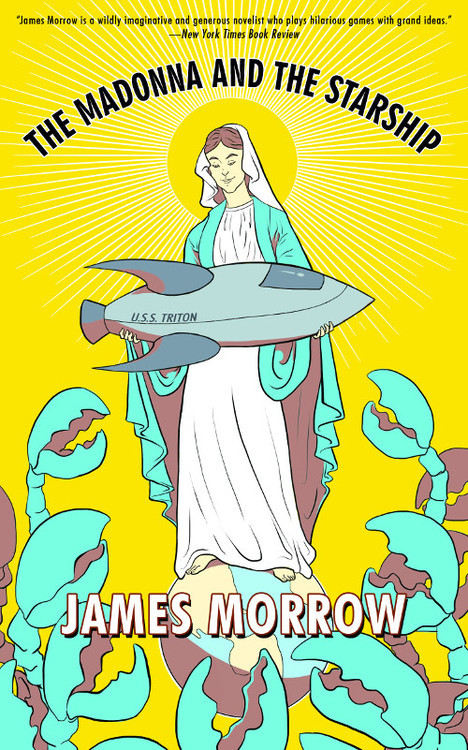A mixture of breezy humor and provocative thinking characterizes James Morrow’s two most recent sci-fi novellas

For The Washington Post, Michael Dirda reviews James Morrow’s two most recent books from Tachyon Publications: Shambling Towards Hiroshima and The Madonna and The Starship.
A comparable mixture of breezy humor and provocative thinking characterizes James Morrow’s two most recent sci-fi novellas from Tachyon Publications, “Shambling Towards Hiroshima” (2009) and this year’s “The Madonna and the Starship.” Set in 1945, “Shambling Towards Hiroshima” reveals the secret of the hush-hush Project Knickerbocker: To bring World War II to an end, the U.S. Navy inveigles a Hollywood actor — the star of “Corpuscula” — to don a lizard suit, then films him breathing fire and stomping with rage on a miniature city. Obviously, the Japanese will be shocked into surrendering once they see what will happen to their country if the monster Gorgantis is really unleashed. Nothing quite works out as planned, but Morrow has a lot of fun evoking the 1940s film industry. “What Rough Beast” is even directed by James Whale, the man who gave us the 1931 “Frankenstein.”
In “The Madonna and the Starship,” Morrow turns to the so-called golden days of television. Kurt Jastrow — a name that evokes both Kurt Vonnegut and science popularizer Robert Jastrow — is the head writer for “Brock Barton and His Rocket Rangers.” Each week he generates three-part serials with titles like “The Phantom Asteroid,” featuring Brock and his “fearless first lieutenant, Lance Rawlings; his prepossessing second lieutenant, Wendy Evans, a.k.a. the love interest; a slap-happy ensign, Ducky Malloy; a humanoid robot, Cotter Pin; and a talking gorilla, Sylvester Simian, whose intellect has been augmented through accelerated evolution.”
<snip>
Amid all this retro-fun, Morrow soon starts to complicate the picture. One afternoon, Kurt’s Motorola television unexpectedly turns itself on, then displays the fuzzy image of “a svelte blue lobster with serrated claws and a grasshopper’s rear legs. Its visual system was tripartite — three large eyeballs protruded from its brow on pliant stalks — and its toothless mouth opened and closed along the vertical axis.” The creature naturally speaks the immortal line: “Greetings, Earthling!”
<snip>
As it happens, James Morrow is not just an award-winning science fiction writer, he is also a committed atheist. Ever since “Towing Jehovah” (1994), his books have addressed questions of morality, epistemology and religious belief, and done so with a satirical bite. But can the massacre of true believers, even in the name of reason, ever be reasonable? This is, after all, just a comic novella set in an alternate 1950s — nothing to do with the real world.
Read the rest of Dirda’s review at The Washington Post.

For more on The Madonna and the Starship, visit the Tachyon page.
Cover and design by Elizabeth Story.
For more info on Shambling Towards Hiroshima, visit the Tachyon page.
Cover by Ann Monn.
